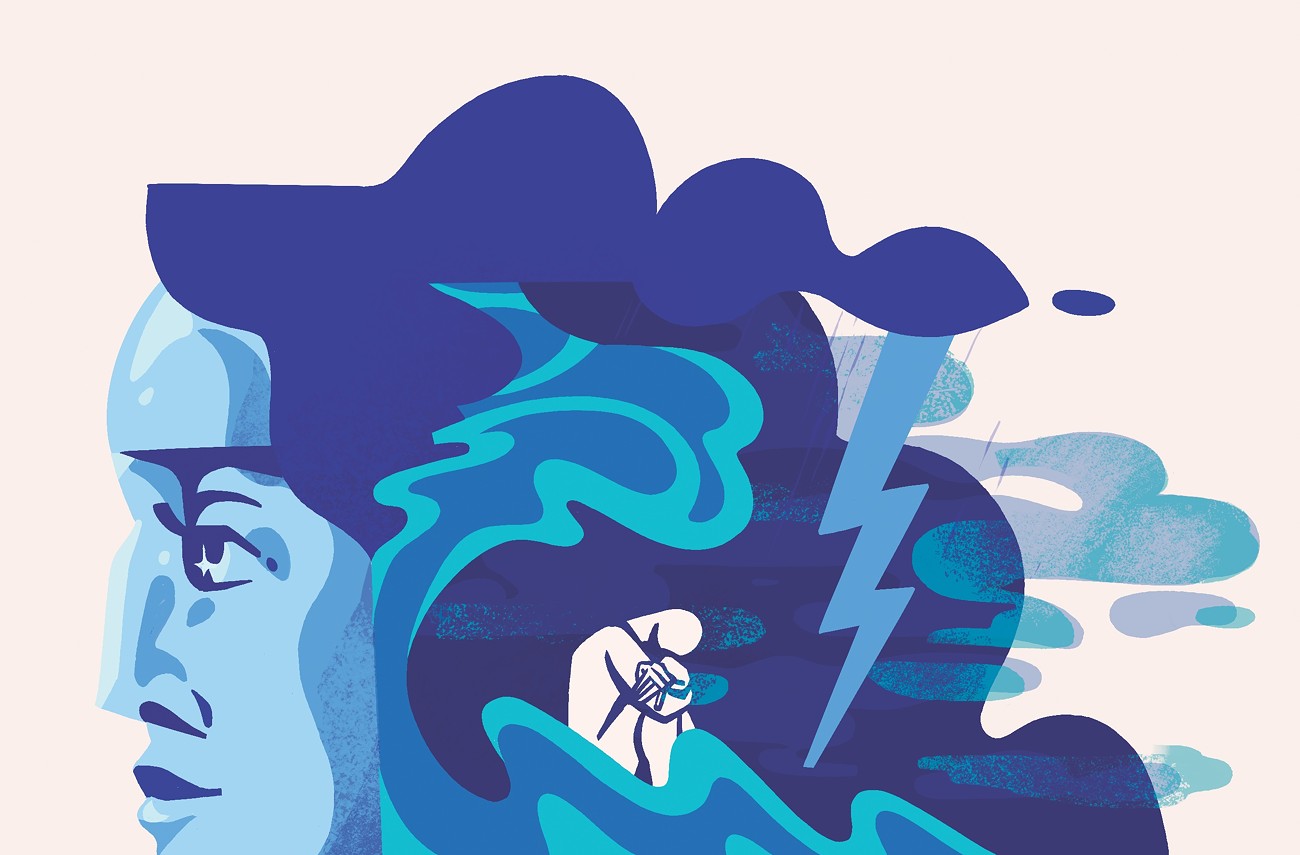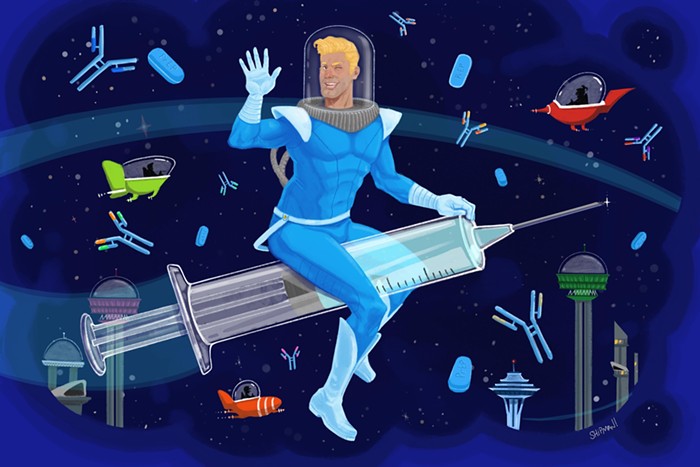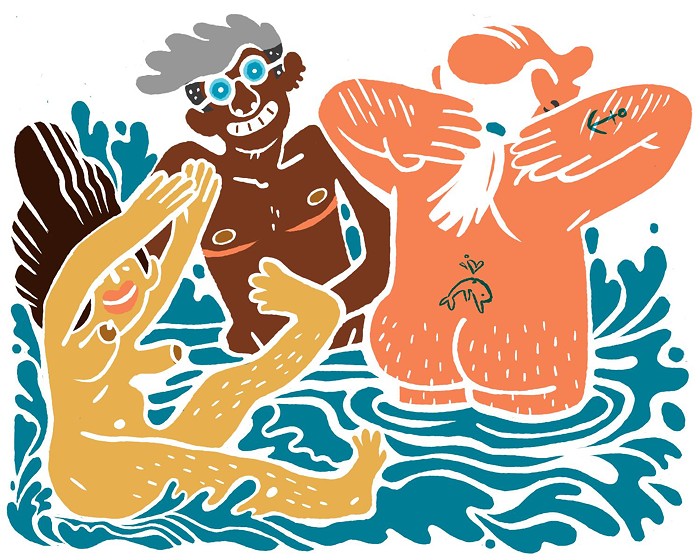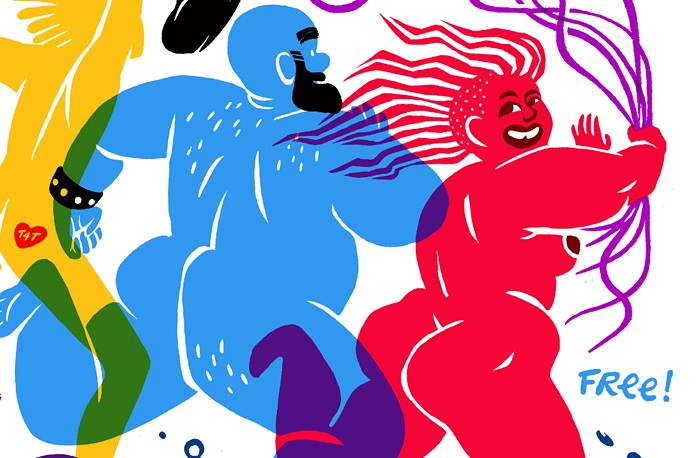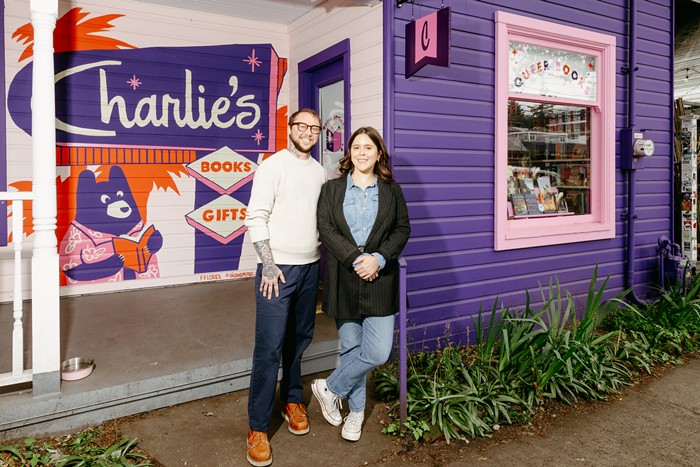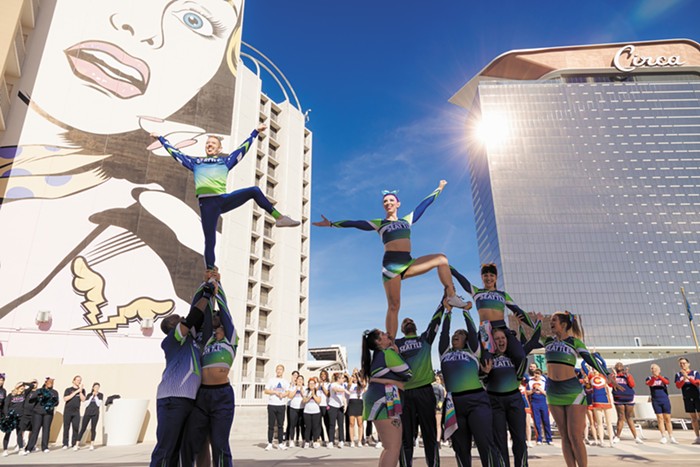The Books of Love
Charlie’s Queer Books Is a Welcoming Space for Seattle’s LGBTQ+ Lit Nerds
The Future of HIV Treatment Is Injectable
Promising Drugs Could Expand Treatment–If We Get Out of Our Own Way
What’s Next for Denny Blaine?
Maybe New Rules, but Certainly Fewer Thorns
Getting High with Seattle Cheer
A Very Queer Play Date
Dave Upthegrove Wants to Save the Trees
...And Become Washington State’s First Gay Executive While He’s at It
Queer Issue 2024 Pickup Locations
Looking for a Copy of This Year’s Queer Issue? You Can Find One at the Following Locations.
Can Seattle Drag Afford to Stay Weird?
Rising Costs, and Fewer Beginner-Friendly Venues, Are Sanitizing Seattle’s Drag Scene
50 Years of Queers
Gay Betrayals! Rich Prudes! Queer Futures! And an Absolutely Stuffed Pride Calendar!
The Gays Who Slayed and the Gays Who Betrayed
Not Every Queer Politician Is an “Ally”
Letters to Our Younger Trans Selves
What We Wish We Knew
The Reality Behind the Story I Told The Stranger
I Said I Was Detrans, but Really I Was Struggling
Out of This World
Forming the SassyBlack Universe
The Futures of Seattle’s Gayborhood
An Architect, an Urban Planner, a Documentarian, an Academic, and a Business Owner Imagine What Capitol Hill Will Look Like in 50 Years
The Biggest Pride Month 2024 Events in Seattle
Festivals, Parties, and More All Throughout June
Originally published in Reclaiming Trans.
Back when I was still a detrans woman, I was interviewed a few times by journalists for articles on detransitioning. An article in The Stranger written by Katie Herzog drew the most attention and the strongest reactions. Many trans people and their allies found the article offensive and transphobic, and they reacted to it in outrage. Many also wrote critical responses.
That Stranger article gives an incomplete impression of who I am in large part because of how I represented who I was when Herzog interviewed me. Now I want to uncover the parts of my life that I kept hidden at the time, and to discuss the deception I was engaging in but unaware of.
In doing so I do not mean to excuse my actions or argue that my lack of awareness made them any less harmful. I believe it’s important for people to know my state of mind; I was more a cult member than a con artist.
In the months before the interview, there were many signs that my detransition wasn’t working out, but I was keeping all of that almost entirely to myself. I’d been living as a detrans woman and using “alternative treatments” to cope with dysphoria for around four years at that point. When I look back on my journals from that time, I find myself talking about how I still had trouble relating to my female body; it still felt weird, and I felt uncomfortable with my breasts and reproductive parts in particular. I could accept that I had those body parts, but it took work to do so, and I didn’t feel especially positive about them or connected to them. I also talked about wanting a cock and how that seemed more appealing than having a cunt. In one journal entry, I wrote that I still wanted a male body on some level and “[i]f I woke up with a male body, I think I’d be ok with that as long as it wasn’t radically different, just the male version of my current body.”
I wrote about how I still felt like a dude sometimes, like a kind of “female man.” I talked about how I “became a woman” when I detransitioned and about how much work that involved.
I wrote about how I found myself wishing that I had gotten more out of detransitioning than I actually did, how I had wanted it to fix more problems in my life.
I talked about how “I made myself into a lesbian feminist,” how I had really wanted learning to accept myself as a woman to heal me and make me whole, and it just hadn’t lived up to my expectations. Some of it helped me heal from past trauma, but not as much I was hoping it would, and I felt let down.
I talked about how hard and stressful it was to live as a woman. I was beginning to question both my motives for detransitioning and just how much it had helped me.
I wrote about how both my detransition and conversion to radical feminism now looked like they were at least partially a response to conflict and trauma I had experienced in a radical queer collective house I used to live in. I talked about how I had joined the radical feminist community because of how I’d been hurt in the radical queer community. I’d been looking for a better, safer place to belong. That’s not what I’d found, not at all. In fact, I found the same kind of hurtful behavior and abusive people in the radical feminist scene.
I still had a very critical view of transitioning and tended to see trans identity as a response to living in patriarchy, but I was growing increasingly frustrated with the way most radical feminists viewed trans people and transitioning. I was questioning more and developing my own views based on my experiences and research into the history of trans people and medical transition. I was fed up with how cruel many radical feminists were towards trans people, how they talked about transitioned bodies with disgust, and how so many of them treated trans people as if they were freakish and inferior. I was opening up to the idea that for some people being trans was the most authentic way to exist in this present society, and that transitioning actually helped some people, though I still worried a lot about people being pushed to transition or to identify as trans.
This thinking marked a big shift for someone who had previously believed that all trans identity was a harmful coping mechanism, and that transition was inherently harmful, a person who wanted to stop as many people as possible from transitioning and to encourage people to detransition or desist. I didn’t get to believing in transphobic ideology all at once, and I couldn’t disengage from it all at once, either. It was a long process that took years to fully unfold.
At the time, I was conducting research for a book on “female gender dysphoria” that I was planning to write. I wanted to talk about gender dysphoria in female-assigned people as a result of life under patriarchy and discuss the different ways people managed this dysphoria.
When I began my research, I saw both medical transition and radical feminism as ways to respond to “female gender dysphoria,” the first being contaminated by false consciousness while the latter got to the true root of the problem.
My views ended up shifting dramatically over the course of my research. What I learned about the history of trans peoples’ interactions with medical professionals ended up challenging a lot of my beliefs, but initially I twisted what I read to fit my pre-existing theories and eagerly shared my “findings” with others, offering up “proof” to back up the radical feminist interpretation of transmasculinity and transition.
It was hard for me to totally break free from radical feminist ideology, in large part because of the kind of people I was spending most of my time with. During that period of my life, I lived in the East Bay, where I participated in a community of transphobic radical feminist lesbians, a few of whom were also detrans or re-identified. I was dating and living with a member of this community.
While hanging out among ourselves, the other younger members of this scene and I would jokingly refer to ourselves and to each other as “TERFs”, reclaiming a word we viewed as a slur. Many of us got a kick out of having a secret life in a subculture outsiders (correctly) viewed as a hate group.
We thought such people were ridiculous and misogynistic for seeing us as hateful, and we frequently mocked them, acting as if they were ignorant, misled and/or overly sensitive. We would gather at a lesbian-owned coffee shop and complain about how trans activists were a threat to lesbian culture, talk about dangerous and disgusting “autogynephiles” trying to infiltrate “female-only” spaces, and the social forces supposedly pushing lesbians to “dis-identify from femaleness” and identify as trans.
Generally, we were much more sympathetic towards transmasculine people than we were towards transfeminine people. We were especially harsh and hateful towards trans lesbians and other transfeminine people who were attracted to women. We also hung out with older lesbians, who were happy to find younger dykes who shared their particular transphobic interpretation of lesbian feminism. I recall one of these older women talking about how Big Pharma was funding the trans movement and tricking butch dykes, femmy gay men, and other gender nonconforming people into transitioning.
I had made the choice to move to a city with a radical lesbian feminist subculture and attempted to live up to my separatist views and values. I spent years working with other women to build the detransitioned women’s community and had become an influential detrans writer and activist. One of my essays had been published in an anti-trans anthology called Female Erasure, alongside influential transphobic thinkers such as Cathy Brennen, Sheila Jeffreys, Leirre Keith, Jennifer Bilek, and Gallus Mag.
I had plunged into the life I thought I wanted, but it didn’t seem to be working. Nevertheless, I kept my doubts, questions, and disillusionment hidden inside my head and in my journals. In private, I wrote out my criticisms and disillusionment with radical feminism, but among my friends I still voiced the same concerns about trans people, and I still made the same arguments. I went back and forth between acknowledging that my detransition hadn’t really worked and struggling to make it work. I switched back and forth between recognizing that I still found much in common with trans men to writing out all the reasons I couldn’t identify as trans. I tried to treat my dysphoria using the methods I’d promoted for years, doing my best to “accept myself as a woman” because I couldn’t see how I could give it up at this point. My consciousness was fractured into the parts that knew the truth and the parts that still wanted to uphold the ideology I’d bought into. There was the persona I’d created–that of a detransitioned radical lesbian feminist–and there was a messier reality that I tried to keep hidden, even from myself.
I was a trans person who spent most of my time with lesbians who didn’t believe trans people existed and didn’t want them to exist, who treated trans people as a threat to their own existence.
To participate in this community, I had to deny my own feelings, hide many of my thoughts, and distort much of my reality. I had to pretend that I wasn’t who I was every single day. There was no way to be a part of this group without engaging in constant deception. My social life depended on it. This is who I was, and this is what my life was like when Herzog interviewed me.
On the day of the interview, before my phone call with her, I wrote in my journal:
“I have a phone interview with a journalist this afternoon. Should be interesting. Not totally sure I’m the person to do it because I’m having doubts if I really count as a detransitioned woman anymore. I detransitioned, that’s true. Am I sticking with that though? Did I just need to try out living as a woman because I didn’t get the chance to before? I don’t think I need to make anymore changes to my body. I’m also not sure I’d really be happy living full-time as a man. I probably am more in-between than anything but I have a lot of trouble accepting that. I don’t know why I’m like this but I’ve been this way for most of my life now. Able to see myself as a woman or a man. ”
I kept these feelings hidden just as I was hiding so much else. I was still very invested in the role I’d performed as a creator and representative of the detransitioned women’s community.
Once the interview actually happened, I found it easy to slip back into the role I’d perfected by that point. I’d given multiple workshops, written hundreds of pages of blog posts, made videos, and talked to numerous people about what it meant to be a detransitioned woman. I had my story down, and I knew which parts to emphasize. I believed in the story I was telling and thought I was doing important work.
I spoke not only for myself but for my community. Part of my job was to represent detransitioned women and make our stories visible to others. I had ideas I wanted to communicate, but I was largely focused on talking about my lived experience. I wanted other detransitioned women to know they weren’t alone. I wanted people to see that living as a detransitioned woman was possible, to make us seem like real people, not something theoretical or a scare story. I don’t think all my intentions were bad, and I do think greater visibility would help detrans people.
My intentions, however good, don’t change the fact that my understanding of myself was grounded in transphobic ideology and was a distortion of my own reality. I was telling the story I thought should be my truth, not actually describing my reality. There’s a lot I used to believe about my own life that I now see as a manifestation of self-hatred, and I worry about the impact my story could’ve had on other people.
In the article for The Stranger, Herzog, for instance, describes me as being merely sympathetic to radical feminism. In reality, I was far more of a radical feminist than I came off in the article, and I think Herzog inaccurately reflects the relationship between the detransitioned women’s community I belonged to and radical feminism. She mentions non-detrans radical feminists trying to use our stories, but she didn’t discuss how many detransitioned women themselves use their experiences to advance transphobic radical feminism. Many detrans women I knew were committed radical feminists who believed all trans identity was rooted in internalized misogyny and trauma. We didn’t like it when other radical feminists objectified us or treated us primarily as a way to win arguments with trans people, but we shared many of their views and political goals.
The way Herzog described my politics and the relationship between the detransitioned women’s community and radical feminism is partially a result of how I represented myself when she interviewed me. As I’ve discussed elsewhere, I intentionally moderated my views when talking to most people outside of the radical feminist subculture I belonged to. My views were in the process of changing, and I had gotten a lot more open-minded about transitioning and trans people. At the same time, I was still hanging out with self-identified TERFs, and I held a lot of transphobic beliefs.
I can’t imagine that I was entirely forthright with all my views. I focused largely on promoting the idea that trans identity and transitioning could be a manifestation of trauma, dissociation, and internalized misogyny, and I used my story as a way to demonstrate that. I framed what I was doing as working for detransitioned, re-identified, and dysphoric women instead of against trans people. I didn’t see myself as being dishonest when I hid my more extreme views, I saw myself as being practical. I saw most people as being unready for “the truth,” and there were serious consequences to openly calling into question the entire notion of trans identity, and I wanted to avoid that.
I presented Herzog with a more moderate version of my detrans radical feminist persona, completely omitting my more transphobic views and my connections to anti-trans lesbian feminists as well as my raging dysphoria and my disappointment with womanhood. I slipped into the character I’d perfected and forgot about the feelings and doubts I struggled with. I put the well-being of the detrans women’s community ahead of describing the real details of my life. I didn’t even feel like a woman when I gave that interview, but I felt like I had to be one anyways or I would be letting down my whole community.
The story I told to The Stranger was a fabrication, one that I believed in and fought for. It was a story I got trapped in for years, one that swallowed up my actual life. I can’t say it’s entirely false–after all, it includes events from life that did indeed happen, but I don’t believe in this story anymore, and I don’t want it overshadowing my life. It confined and trapped me for years, and I’m concerned about the impact that it had on others.
I’m concerned the story I told could’ve led other trans people to deny or distort themselves. I fear that it encouraged cis people to dismiss trans peoples’ identities or reinforced their transphobia. I was a trans person with a distorted view of myself, magnifying that and projecting it into the larger culture, inflicting my own wounds on other trans people. I am deeply sorry for any suffering I have caused others. I am sorry for participating in transphobic subcultures and engaging in what I now see as noxious and hateful behavior.
I can’t change the past, but I can describe what my life was actually like at the time and make visible the parts I left out or hid. I want people to know that detransitioning didn’t work for me, that it stopped working for me even as I was presenting myself as if it had. I want people to know that I belonged to transphobic communities that encouraged me to deceive myself and others. I want people to know that journalists can be fooled when they hear a story that lines up with what they may be expecting to find. So many people who question trans identities take the stories of detrans people at face value, never considering that there could be more to them than meets the eye.
I’m a trans person who converted to a transphobic ideology, surrounded myself with transphobic people and worked against my own people. I struggle with grief and regret over many of the choices I’ve made.
I commit myself now to be as honest as I can be. I can’t know how my views, feelings, and perspectives will change over time but I can do my best to represent my life and my beliefs as openly and clearly as possible.
Writing about that particular time in my past is difficult because I had a lot of contradictory parts and impulses pulling me in different directions. I can remember what it was like, but I worry others will find my descriptions of it confusing. That time in my life was confusing to live through, and it’s surreal to look back on. I read my old journals and can’t imagine that I shared many of these thoughts and feelings with the lesbians I was friends with. I didn’t even share most of them with my partner at the time. I knew I kept a lot from other people, but it’s intense to realize just how much.
At the same time, it’s a relief to write about this now. Back then, I existed in so many different pieces. I can finally bring all the parts together, connect them to create a more honest description of my past, and make myself whole.
